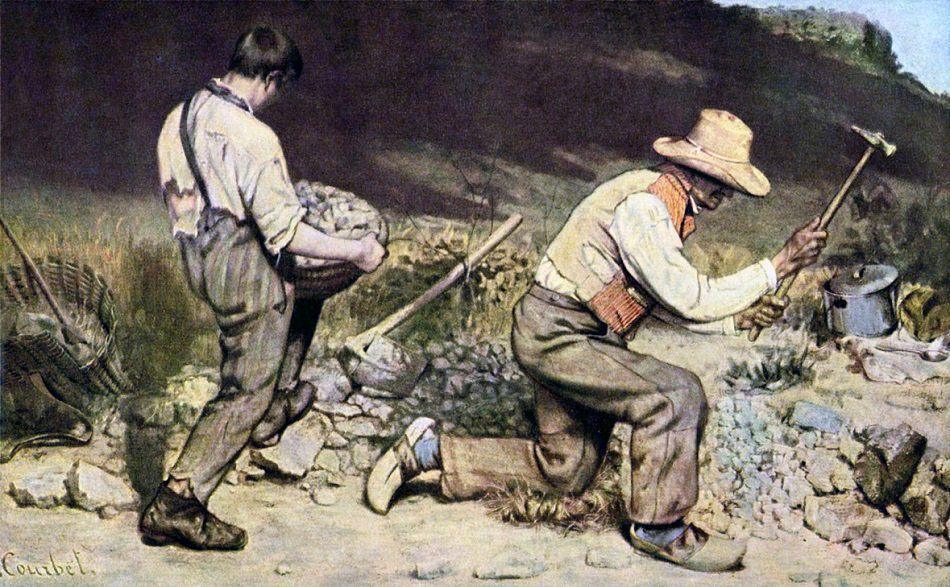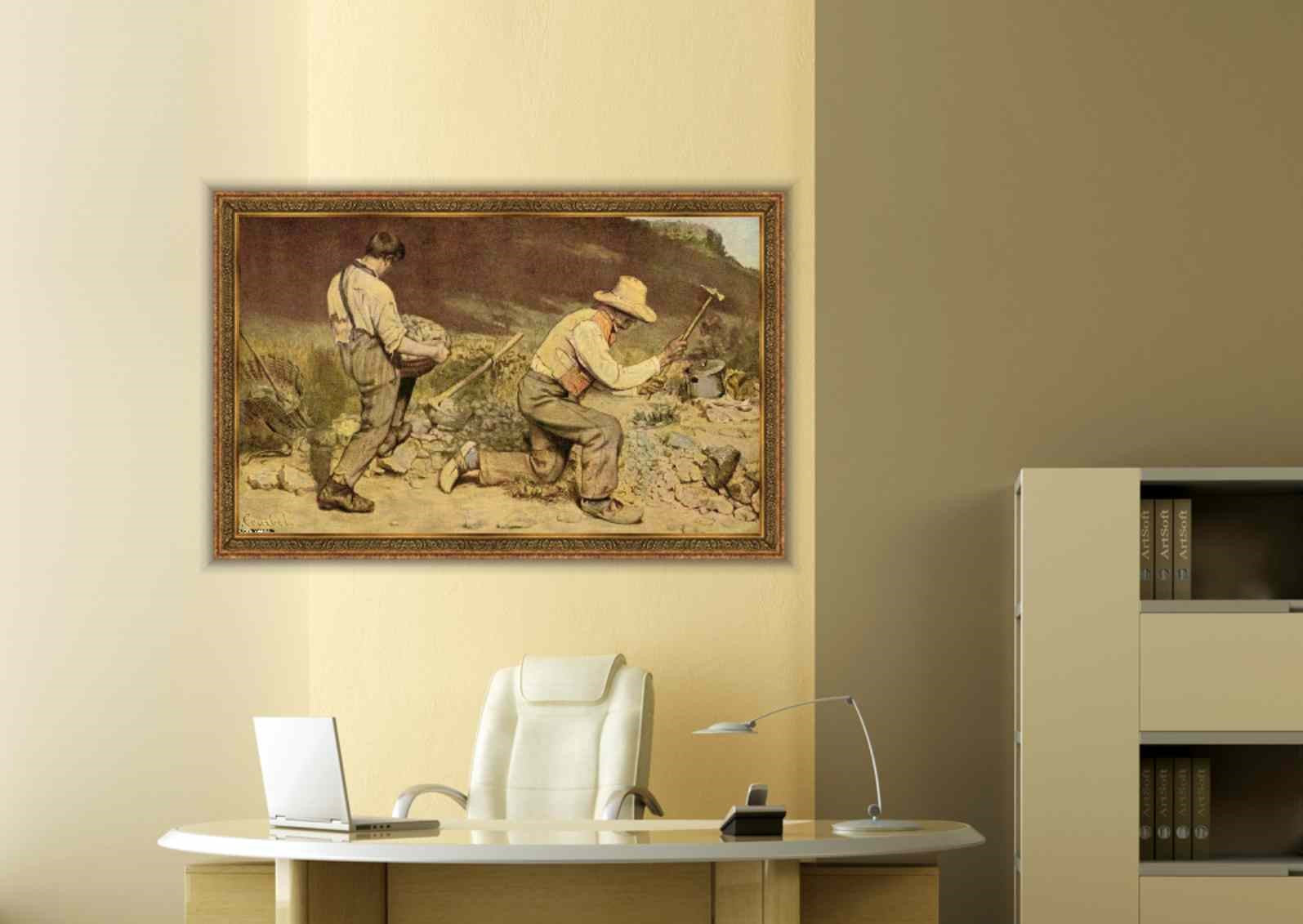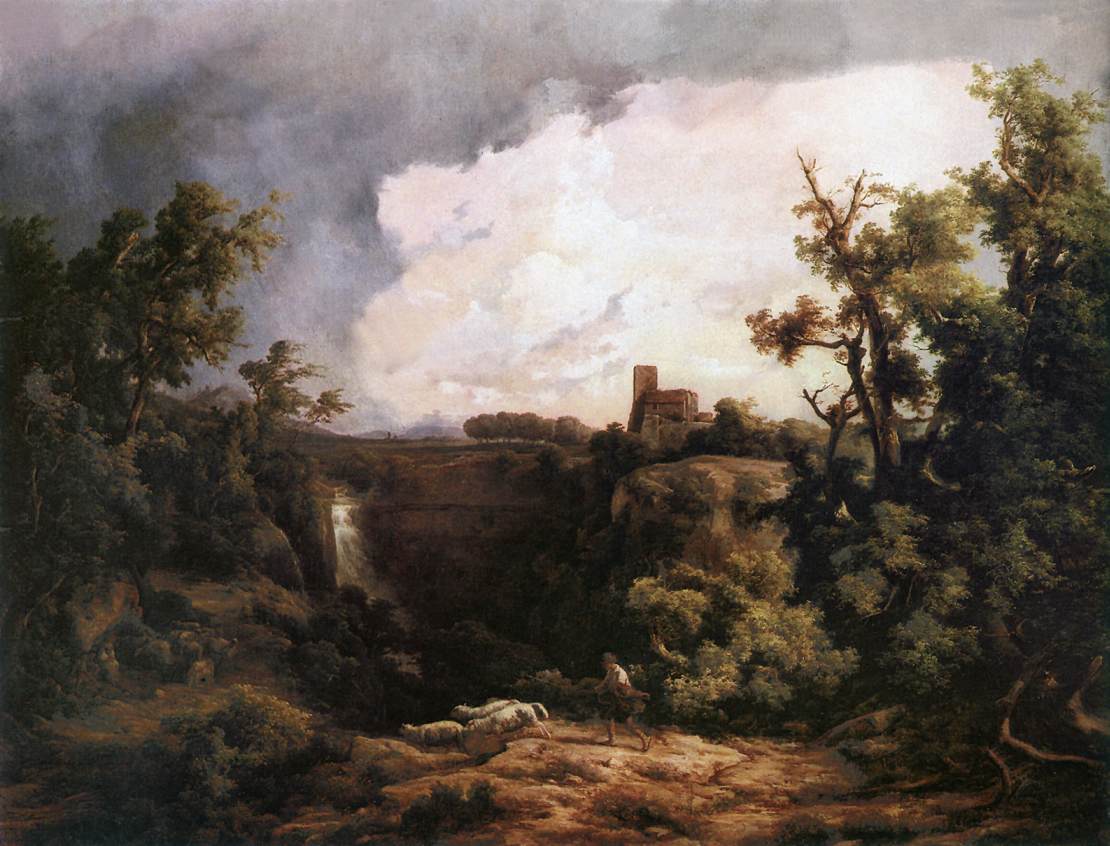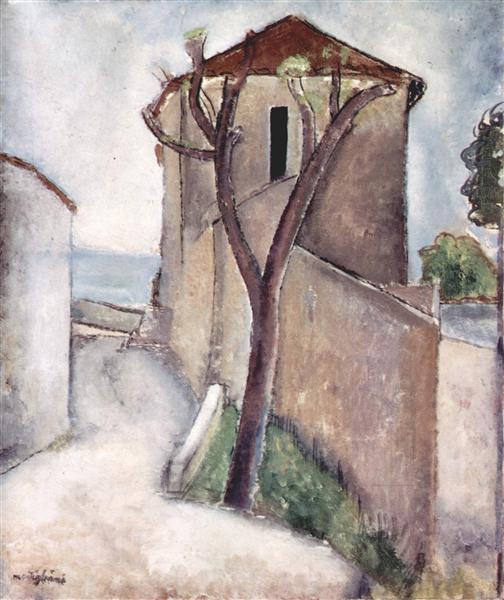Description
The Stone Breakers, painted in 1849, depict two common peasant workers. Courbet painted without any apparent feeling; instead, he let the image of the two men, one too young for hard labor and the other too old, express the feelings of hardship and exhaustion he was trying to portray. Courbet shows sympathy for the workers and disgust for the upper class by painting these men with dignity of their own.
The Stone Breakers, destroyed during the bombing of Dresden in 1945, was the first of Courbet's great works. The socialist philosopher Proudhon described him as an icon of the peasant world. But for Courbet it was simply a memory of something he had seen: two men breaking stones by the side of the road. The art critic Francis Wey y Champfleury told his friends: "It is not often that one meets with such a complete expression of poverty and so, at that very moment, the idea of a painting occurred to me. I told them to come to my study the next morning."
Many of Courbet's paintings focus on ordinary people and places in everyday French life. Courbet painted these ordinary people in an attempt to portray the French people as a political entity. In this way, Courbet's republicanism manifested itself in his work. Courbet sincerely portrayed common people and places, leaving aside the glamor that most French painters of that time added to their works. Because of this, Courbet became known as the leader of the royalist movement.
Courbet wants to show what is "real", so he has depicted a man who seems too old and a boy who seems still too young for such backbreaking work. This is not meant to be heroic: it is meant to be an accurate account of the abuse and deprivation that was a common feature of mid-century French rural life. And as with so many great works of art, there is a close affiliation between the narrative and the formal choices made by the painter, that is, elements such as brushwork, composition, line, and color.
Like the stones themselves, Courbet's brushwork is coarser than might be expected in the mid-nineteenth century. This suggests that the way the artist painted his canvas was in part a conscious rejection of the highly polished and refined neoclassical style that still dominated French art in 1848.
Perhaps most characteristic of Courbet's style is his refusal to focus on the parts of the picture that would normally receive the most attention. Traditionally, an artist spent most of their time on hands, faces, and close-ups. Courbet does not do the same. If you look closely, you will notice that the artist tries to be unbiased, paying attention to faces and stones alike. In this way, The Stone Breakers seems to lack the basics of art (things like a composition that selects and organizes, aerial perspective, and finishing) and feels more "real" as a result.
This painting was destroyed during World War II, along with 154 other images, when a transport vehicle carrying the paintings to Königstein Castle near Dresden was bombed by Allied forces in February 1945.
Color photography was introduced in 1935. This made it possible to document the original painting as we see it here.










